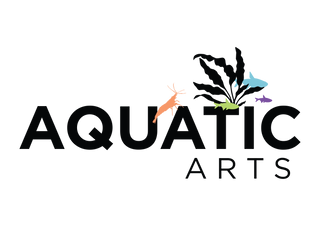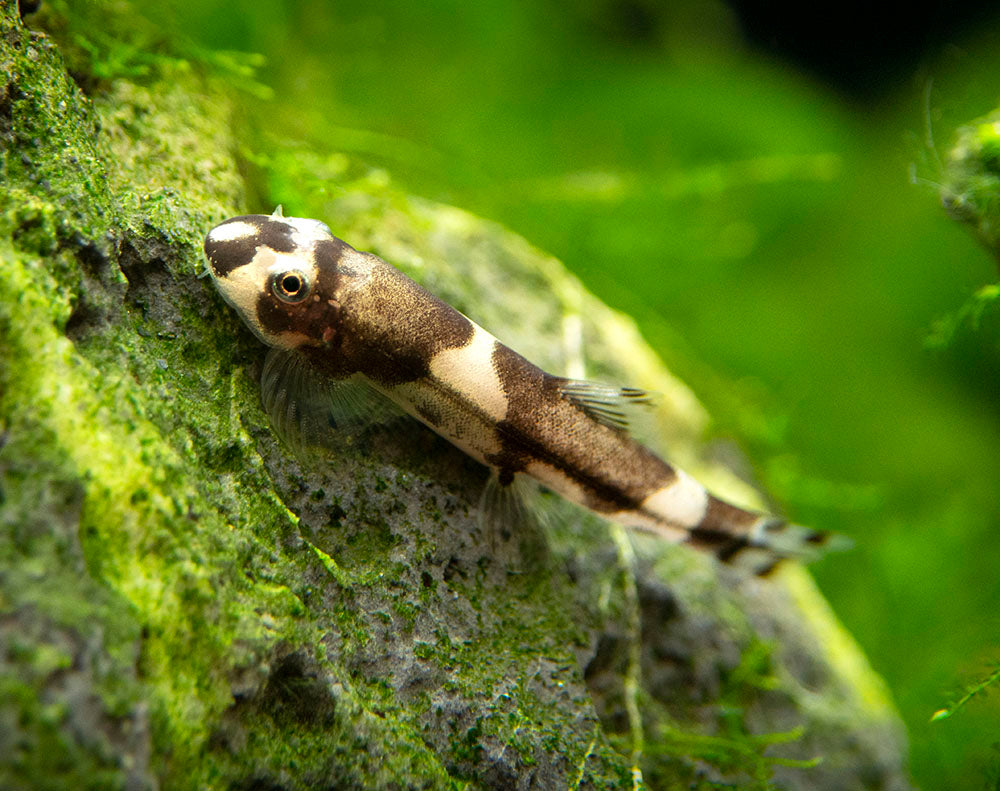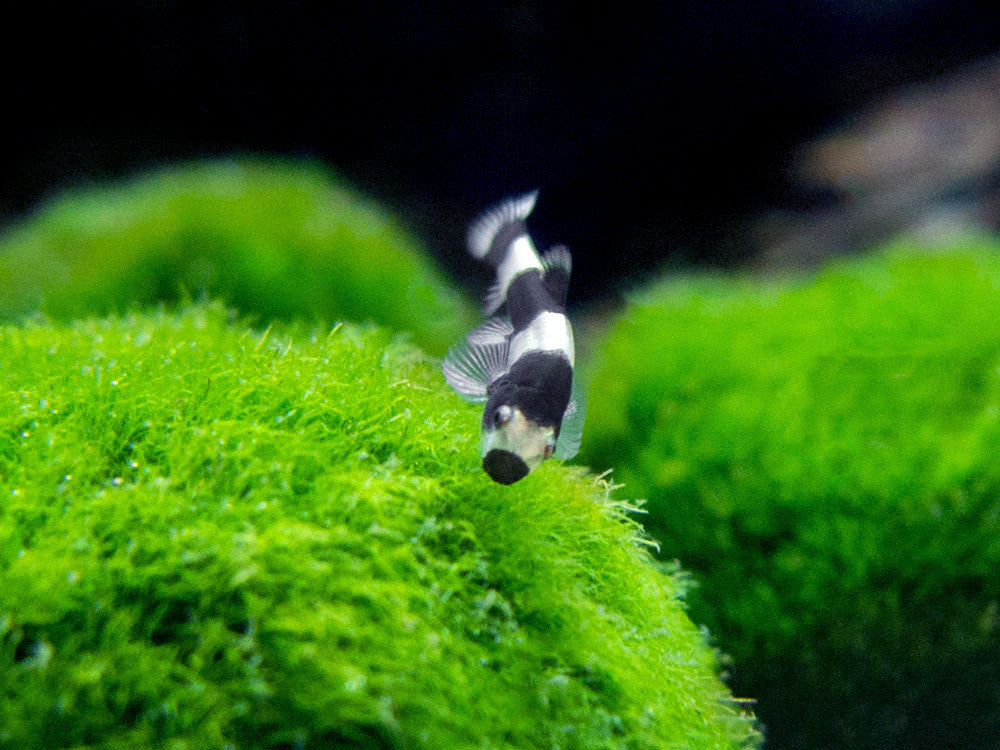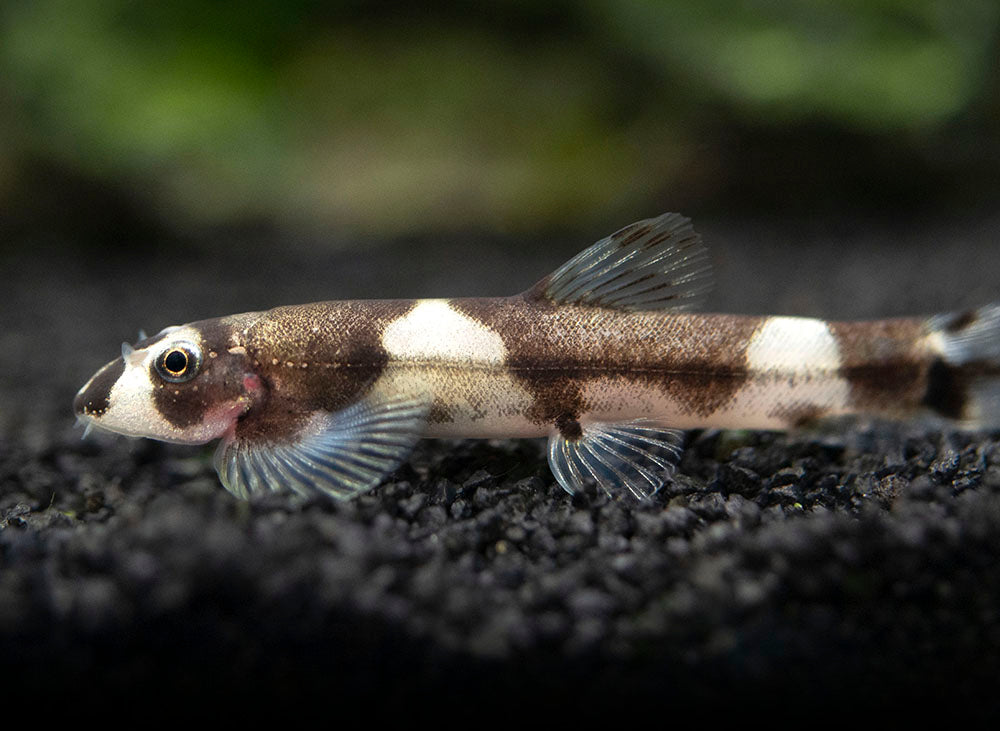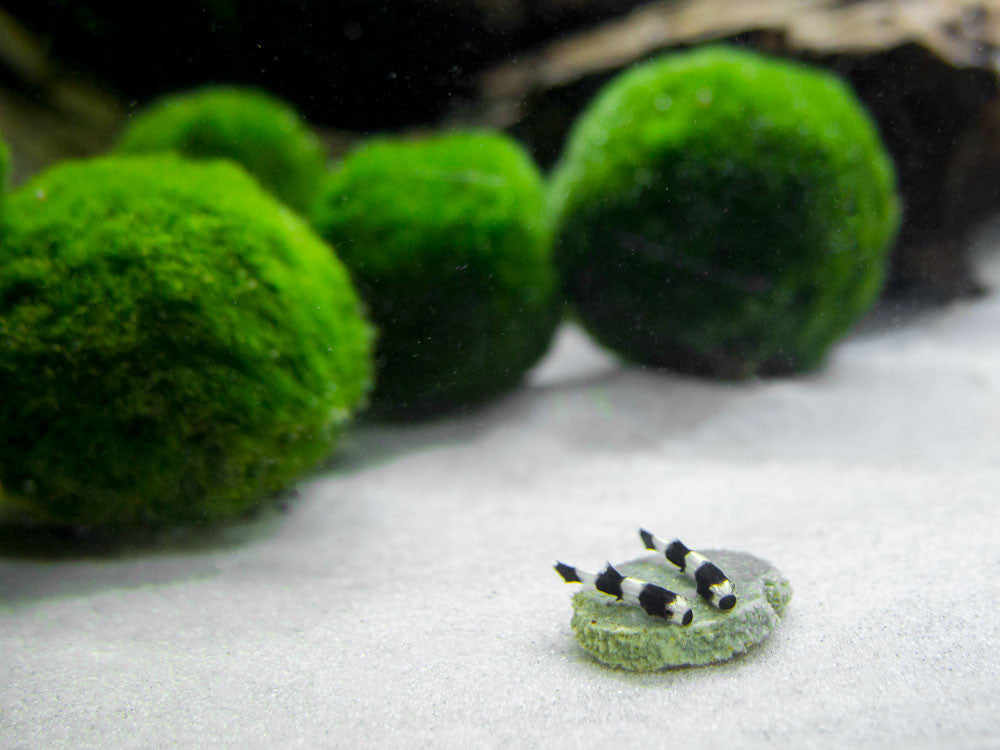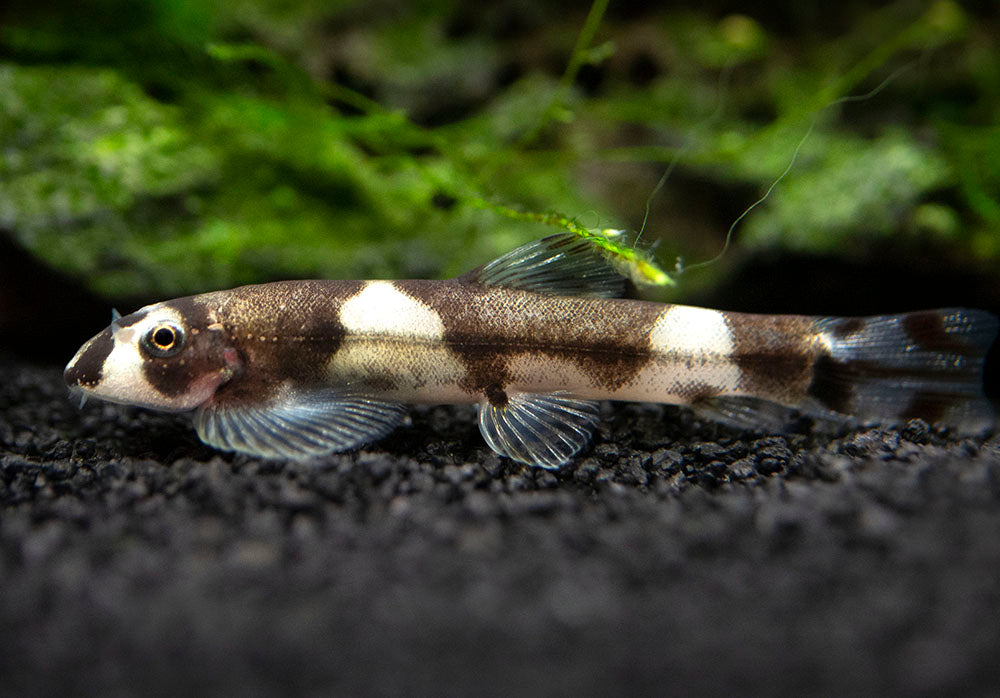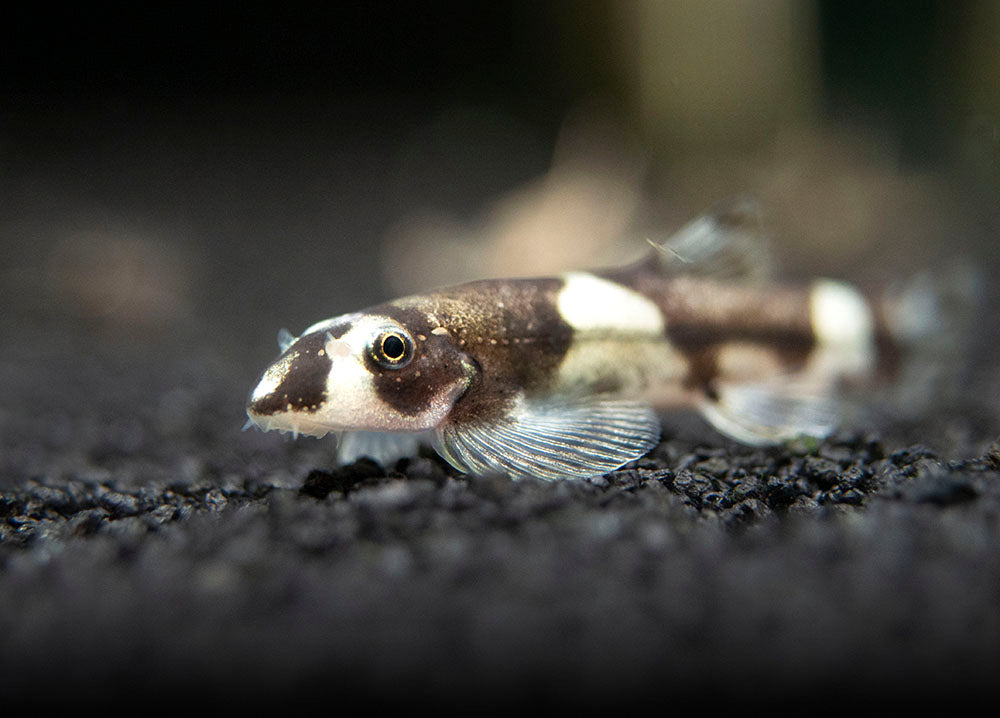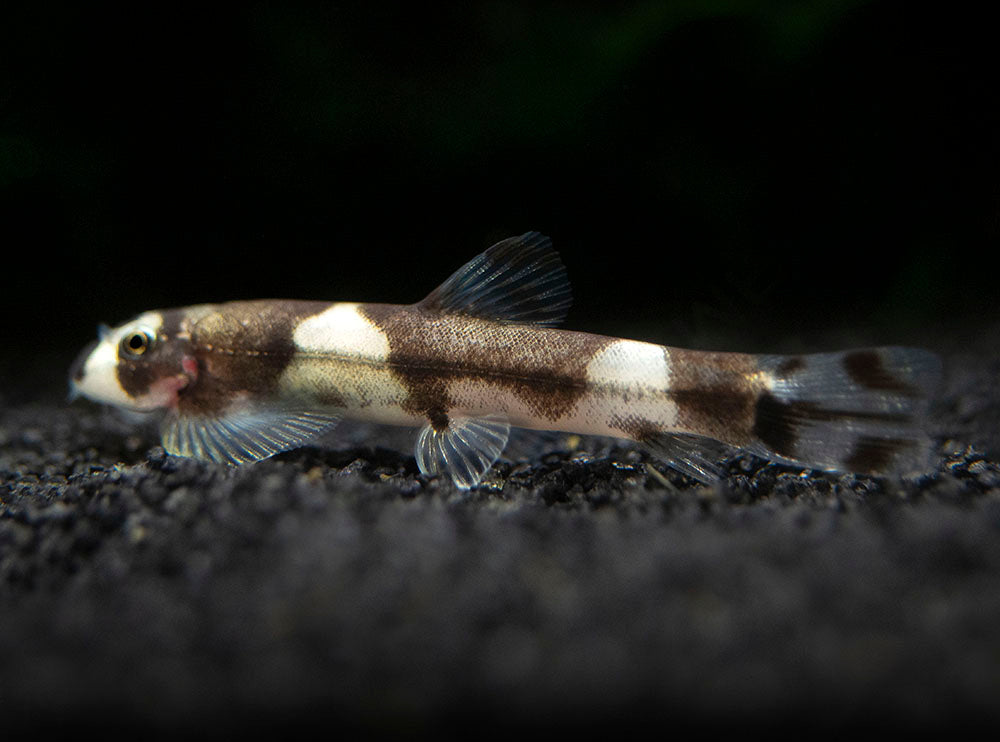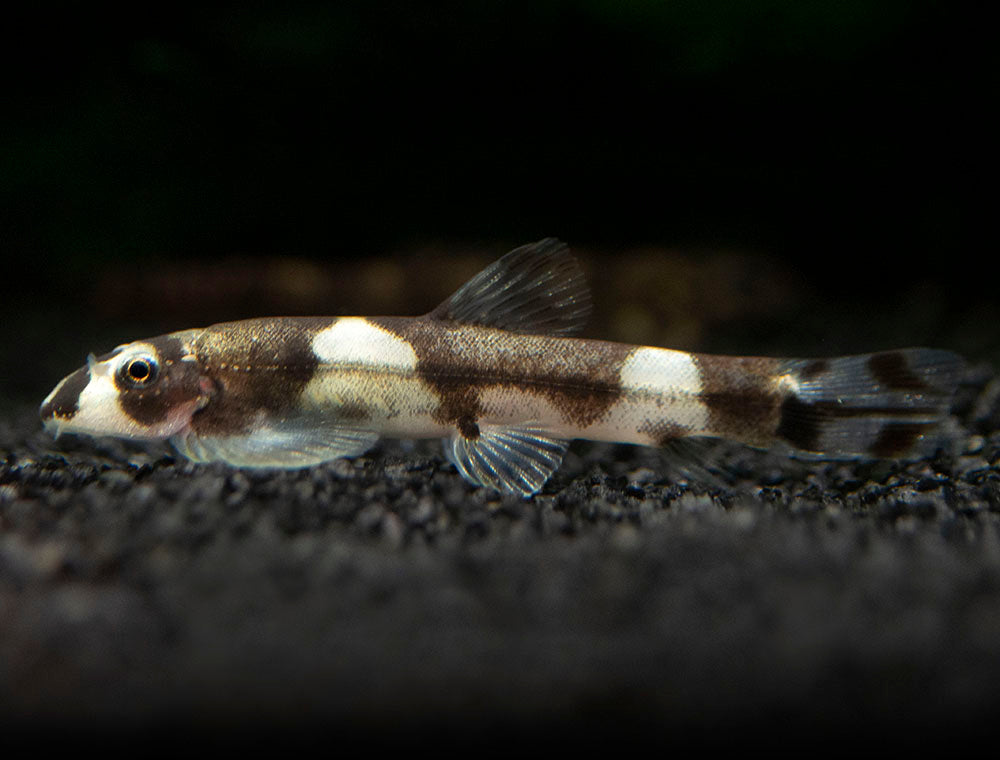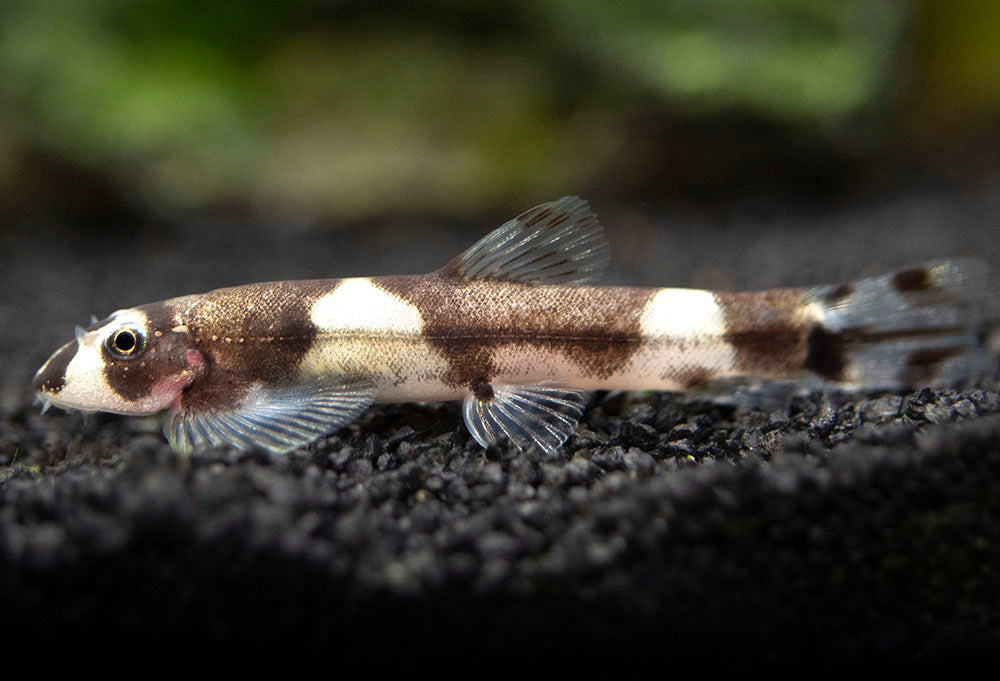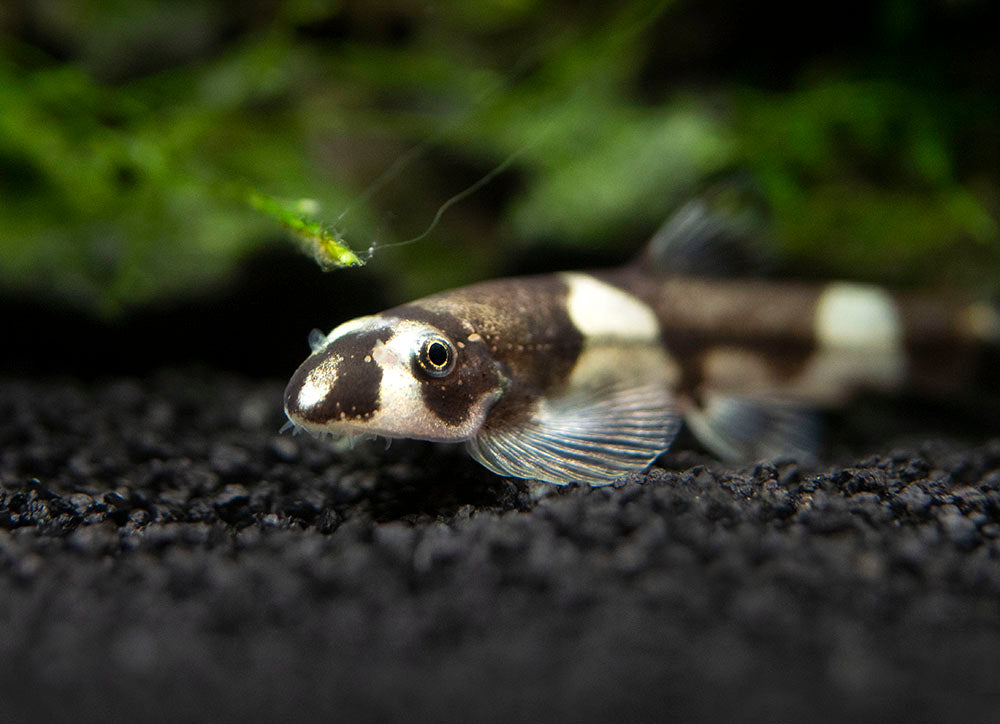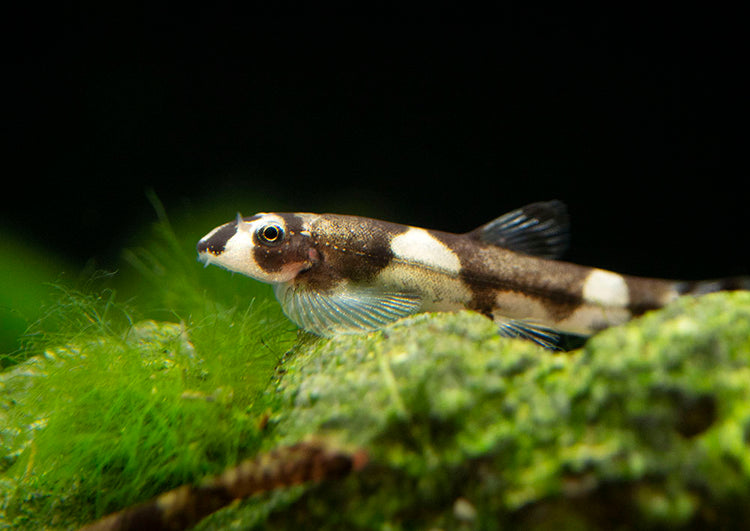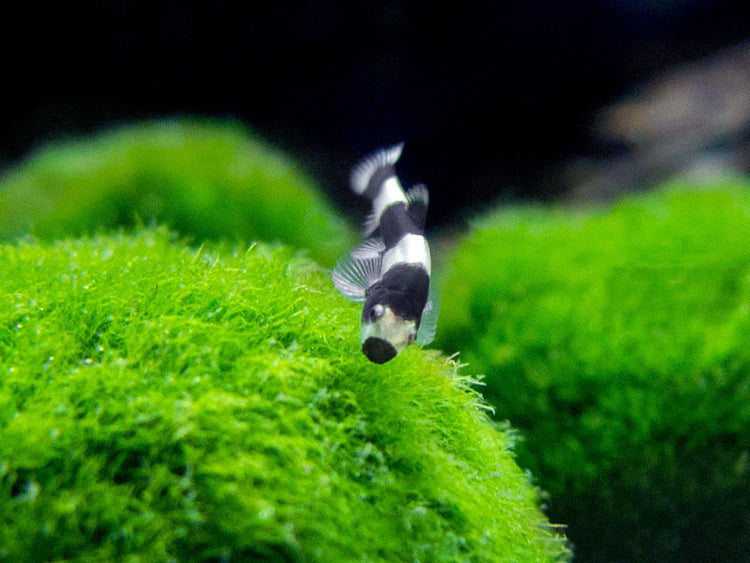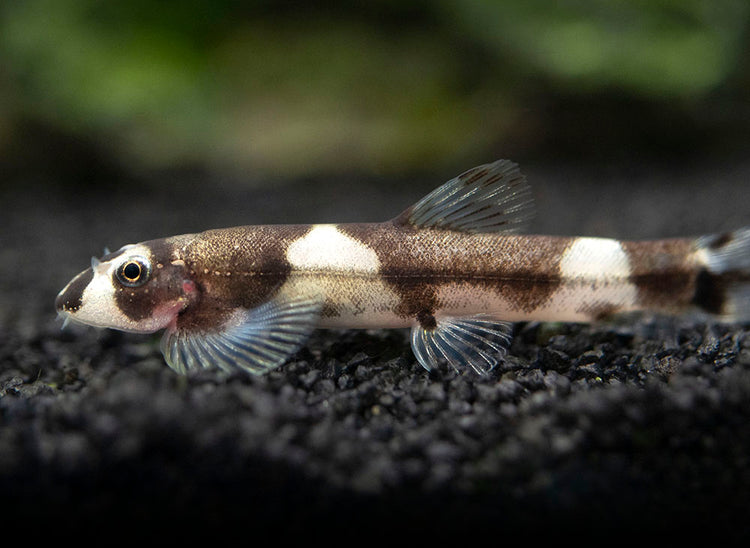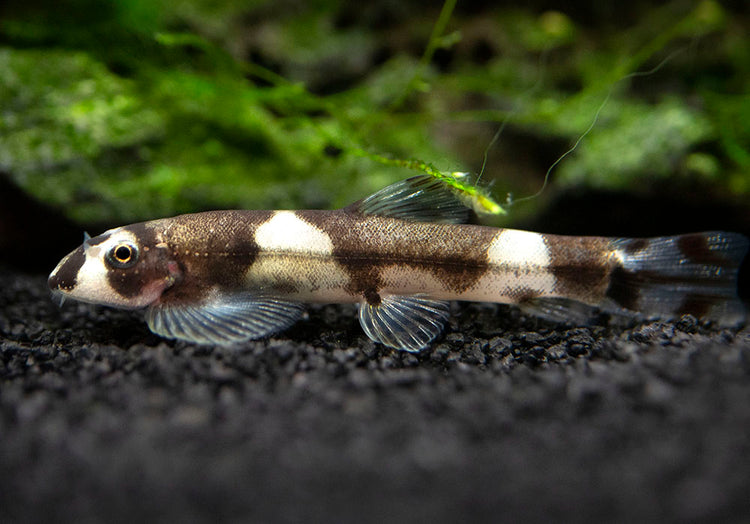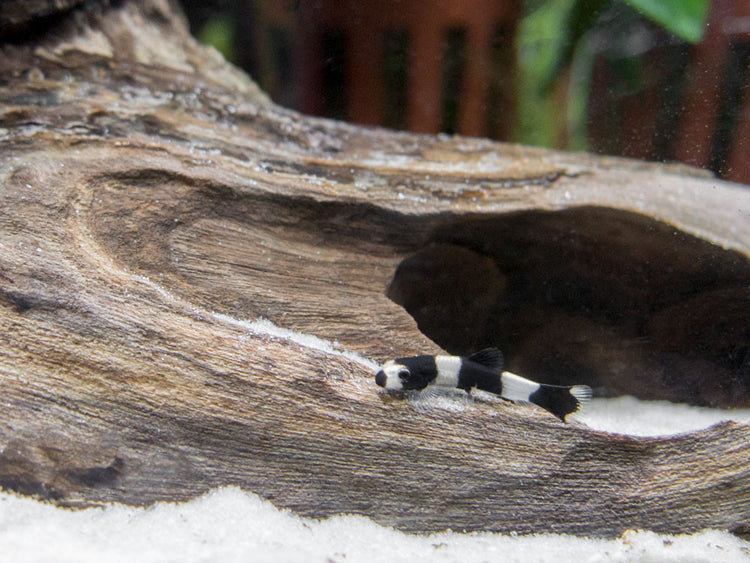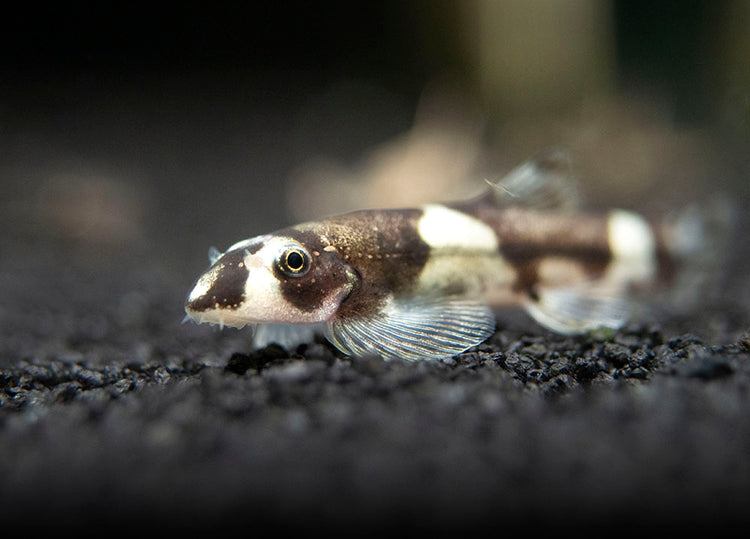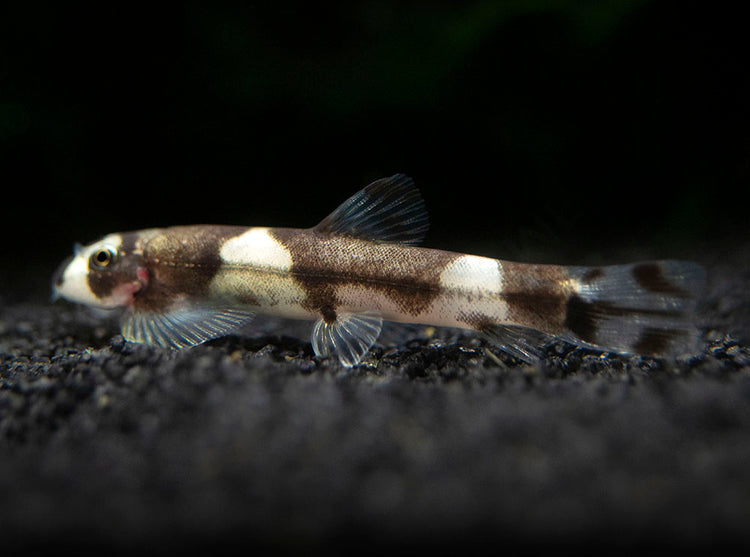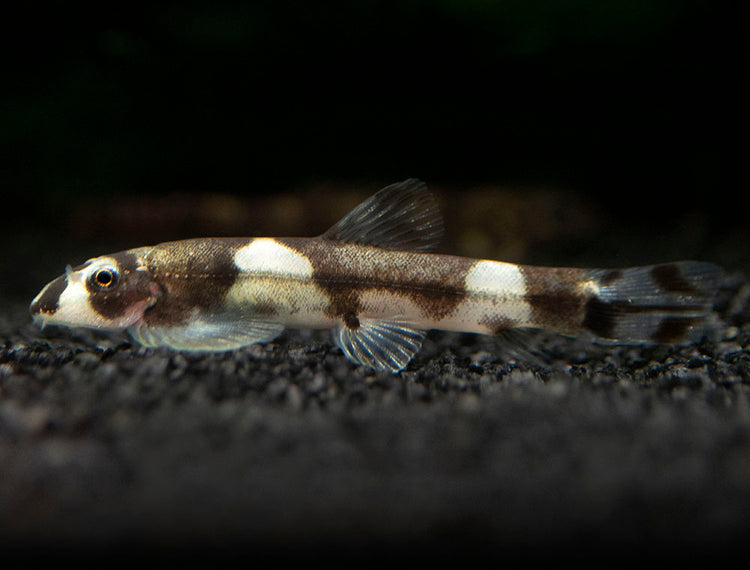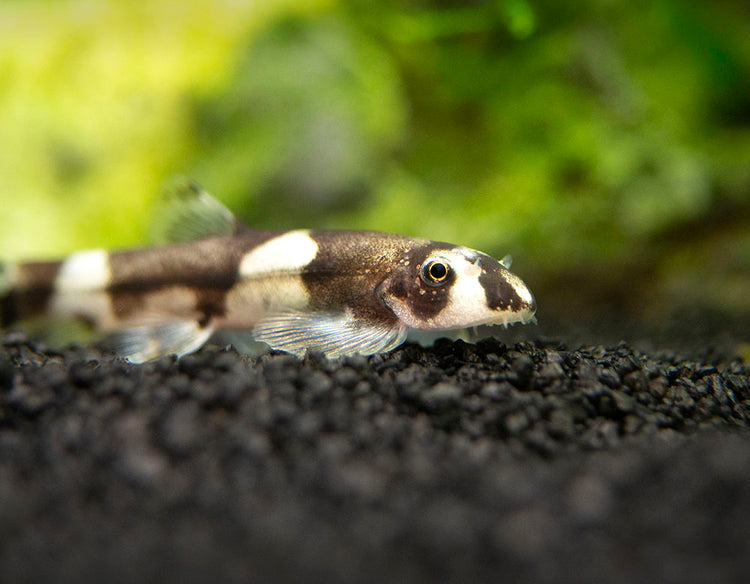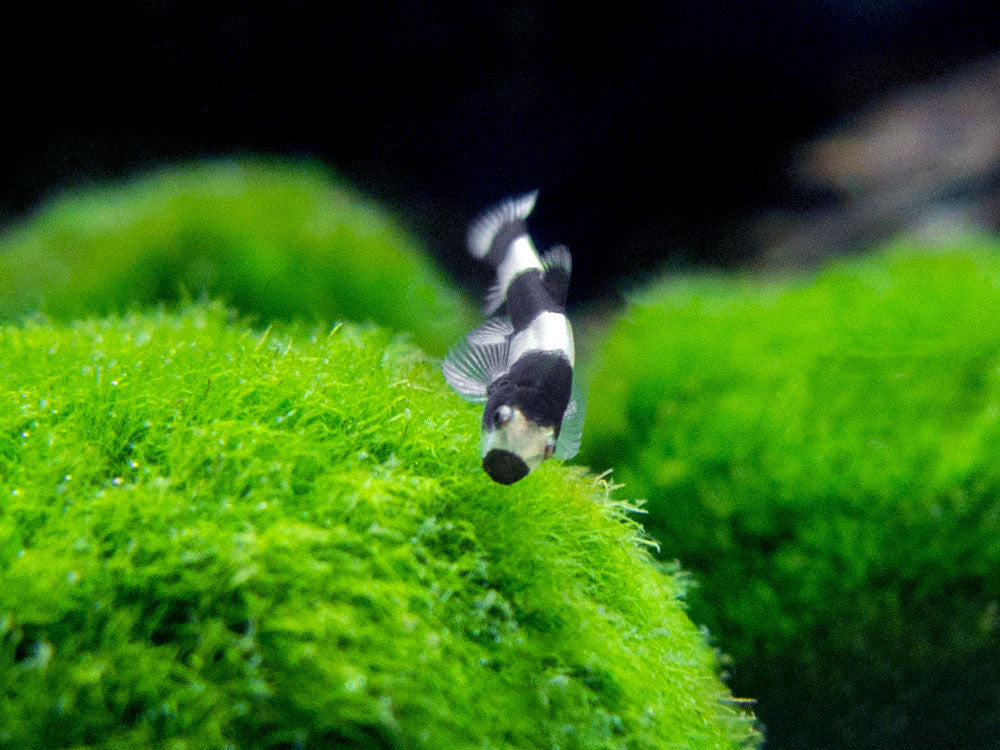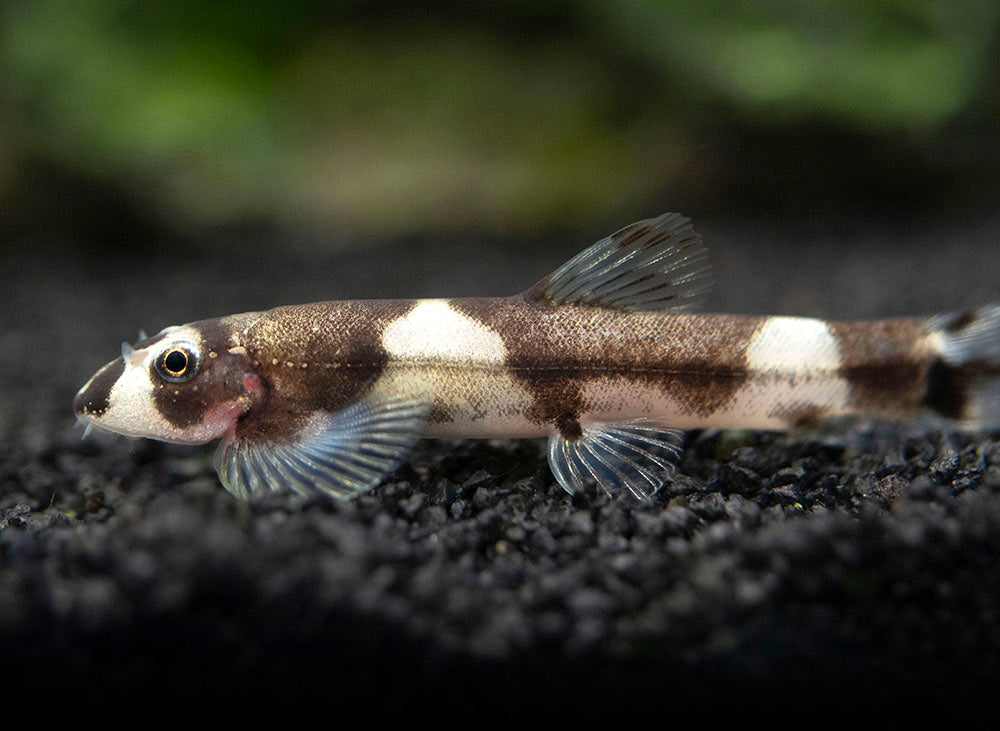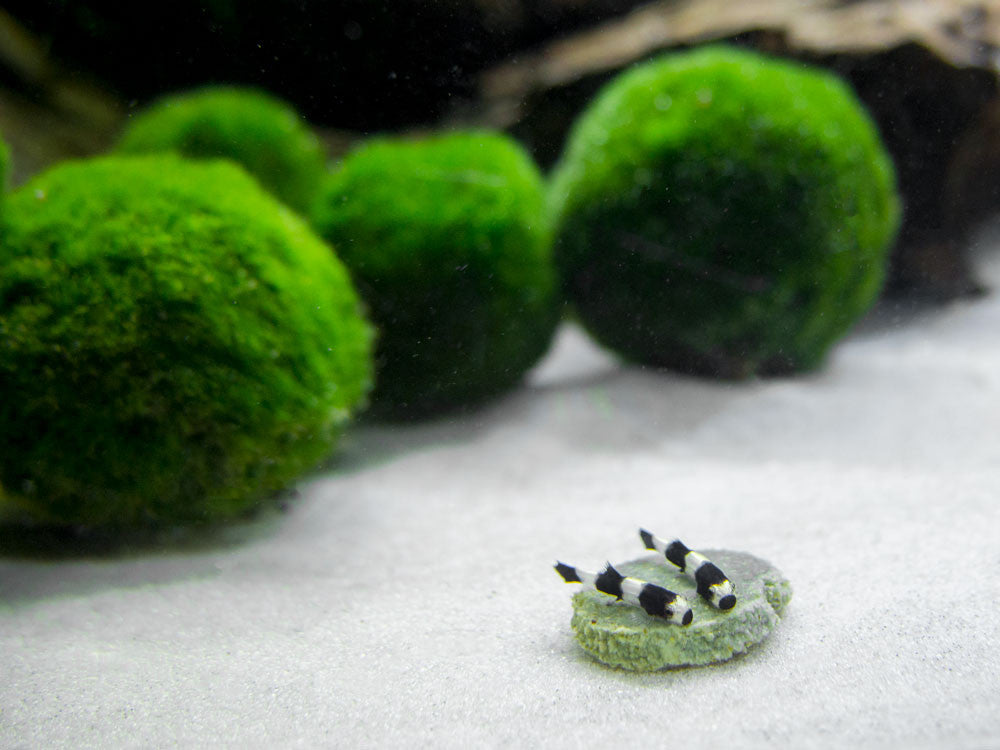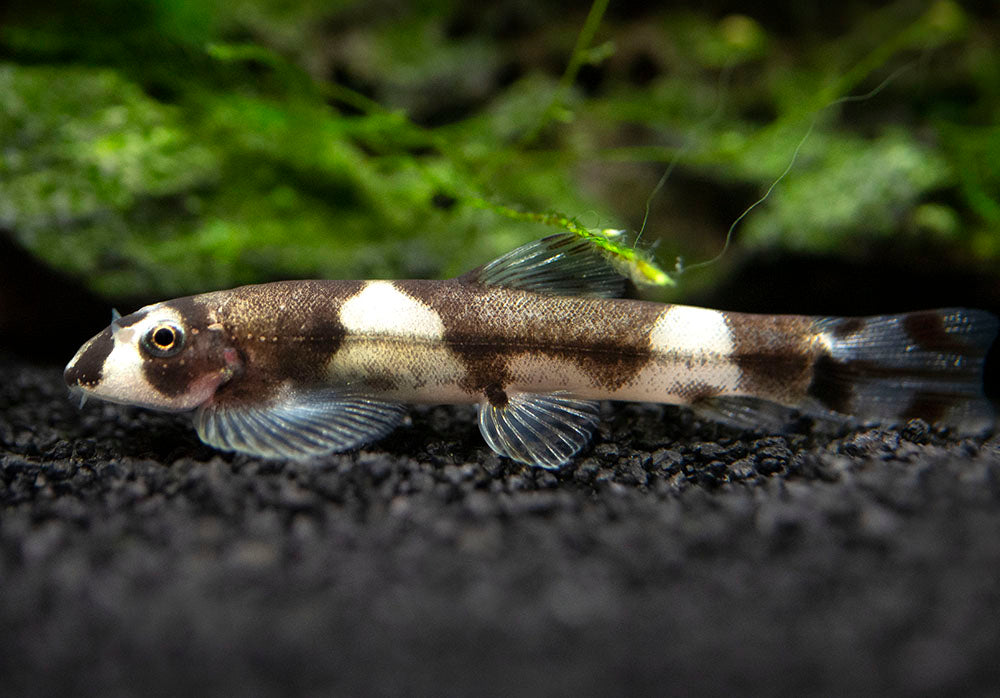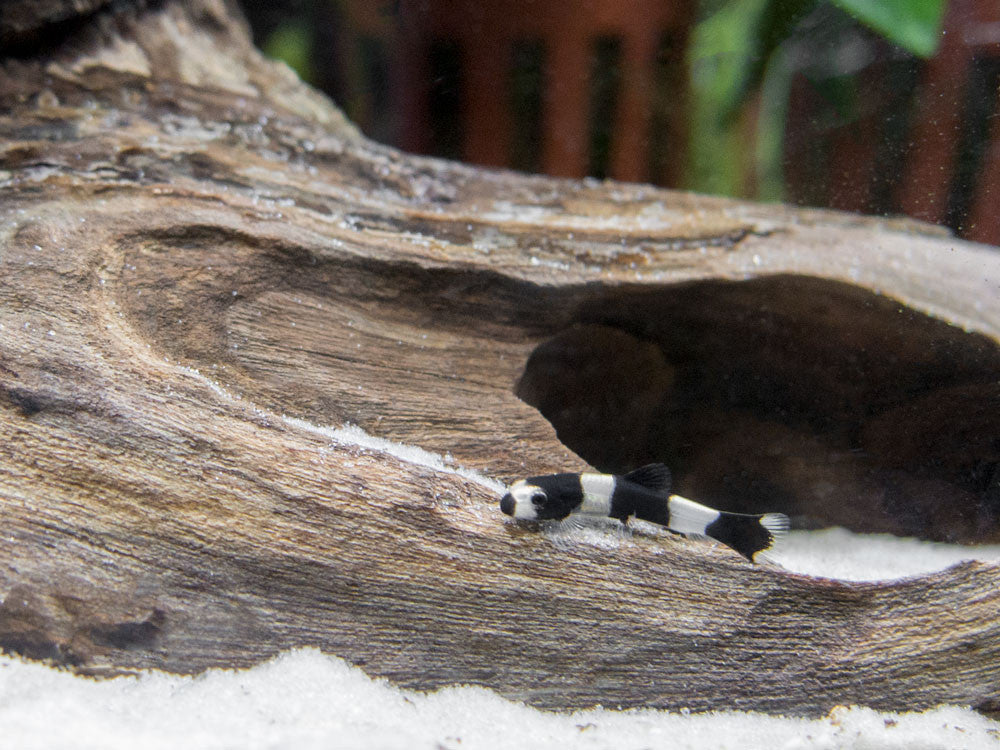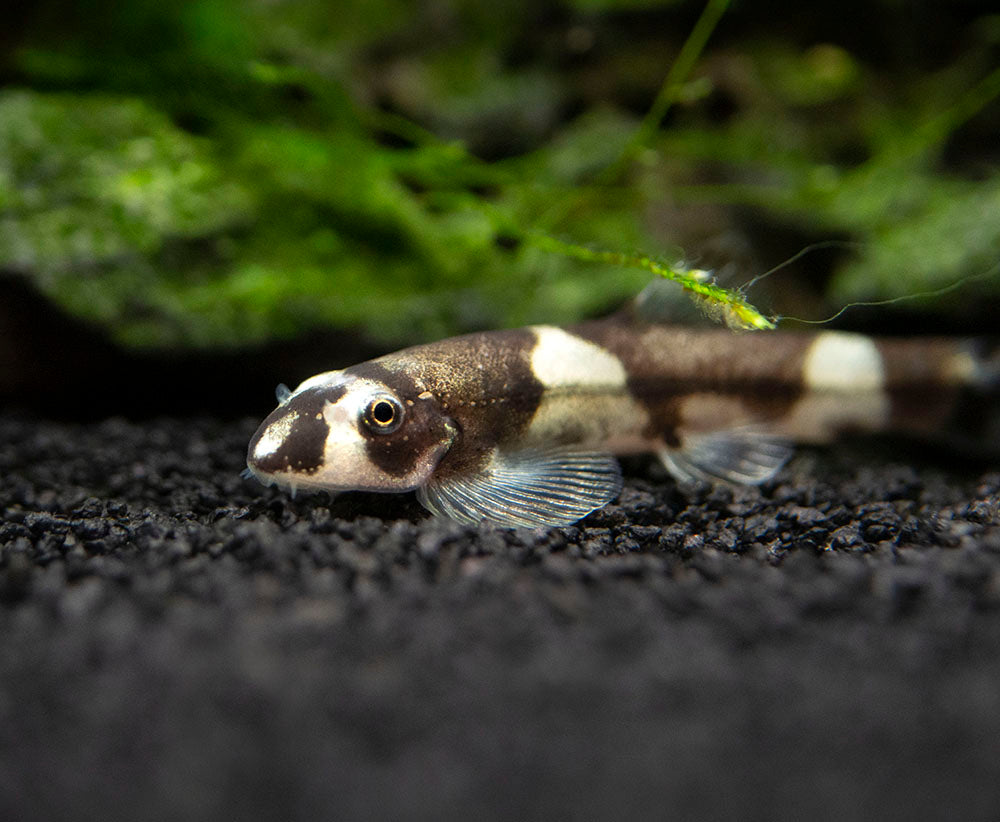Panda Loach (Yaoshania pachychilus)
- In stock, ready to ship
- Backordered, shipping soon
This beautiful loach displays white and black vertical stripes as a juvenile and gold and black reticulated patterns as an adult. It is very peaceful with dwarf shrimp, has a very active and outgoing personality, and is very hardy in a mature aquarium that is rich in algae and biofilm.
The Panda Loach (Yaoshania pachychilus) is a very rare freshwater loach that is native to Southern China. It is known for its beautiful juvenile and adult coloration, its peaceful yet outgoing demeanor, and its fascinating social behavior with members of its own species. This fascinating, peaceful fish is an algae and biofilm grazer that is an excellent candidate for the mature subtropical aquarium.
An aquarium with heavy water flow (10-15x turnover per hour) and very clean, clear water is required for the Panda Loach. Like the well-known hillstream loaches, this loach is native to shallow, clear, fast-flowing waters and it is sensitive to declines in water quality, so regular aquarium maintenance and maximum oxygen saturation are absolutely necessary.
The Panda Loach is a biofilm and algae grazer in nature. It is known to usually accept frozen meaty foods, but such foods should only be fed occasionally. This fish will also sometimes accept high-quality dry foods that are rich in plant matter, but it is absolutely essential that biofilm and algae are naturally available in the aquarium to ensure its long-term health or else it may slowly starve. As long as it is kept in a well-maintained, mature aquarium with good biofilm and algae growth as well as high water flow, the Panda Loach is a hardy and entertaining fish. It will not bother aquarium plants. In fact, Anubias species are an excellent plant to keep with this loach because Anubias can foster significant biofilm/algae growth in an aquarium with moderate to high lighting.
The Panda Loach is a very social species, especially as an adult, so it should be kept in groups. Most small rasboras, tetras, hillstream loaches, and other small, peaceful fish are good tankmates for the Panda Loach. Since they inhabit similar waterways, many smaller freshwater goby species are ideal tankmates as well. Due to its small size and diet, the Panda Loach can also be kept with dwarf shrimp, although it might eat a few of their fry. Dwarf shrimp are particularly good tankmates in larger aquariums where they can find areas of lower water flow. Peaceful bottom-dwelling fish are also a possibility, but care must be taken to make sure that the Panda Loach is not outcompeted for food.
Little reliable information is known about the breeding habits of the Panda Loach. However, it is not necessarily unlikely that it will soon be bred in the aquarium world, especially with the recent progress in breeding other loach species by many individuals.
What We Like About This Fish:
- Beautiful coloration in both juvenile and adult forms
- Peaceful disposition with fish and peaceful invertebrates
- Interesting, active social behavior when kept in colonies
- Safe with dwarf shrimp
RECOMMENDED TANK PARAMETERS:
- Temperature: 68° - 75° F (20° - 23.9° C). Higher temperatures can be tolerated temporarily with extremely high oxygen content..
- pH: 6.5 – 7.5
- KH: 4 - 8 dKH
- Minimum Tank Size: 20+ gallons for a small group.
CARE INFORMATION:
- Diet: Omnivorous. Typically accepts some dry foods and frozen foods, but requires ample algae and biofilm for longevity. A diet too high in protein can cause serious health problems or even death in this species.
- Social Behavior: Peaceful. Juveniles appear solitary, but adults exhibit schooling behavior.
- Origin: Southern China
- Average Adult Size: 2 – 2.4 inches (5 - 6 cm)
- Average Purchase Size: .3 - 1 inch (.8 - 2.5 cm)
All Aquatic Arts brand plants and animals come with a 100% live arrival guarantee, plus free email support directly from the owners!
For the safety of our animals, we only ship live fish, crabs, and select other inverts exclusively via UPS 1 Day Air. If your order contains this item, you will only see UPS 1 Day Air as a shipping option during checkout. If other items are in your cart that can ship with 2 day or standard shipping options the only shipping method you can still select is UPS 1 Day Air.
UPS 1 Day is a description of the duration of time a shipment will spend in transit once it has been shipped. This does not guarantee the package will be shipped the same or next day from which the order was placed.
Shipping Schedule for this service
Current Handling Time:
1-9 business days
Here at Aquatic Arts, we consider the welfare of the live animals we are shipping to be of the foremost importance. This process is much more involved than simply creating a shipping label and affixing it to a box. Depending on the order, it takes from 4 to 7 people to complete this process properly. We check the weather conditions here where they fly out of the Indianapolis UPS facility and the destination for each shipment. We start early each morning and go through a multi-step process to have the day's shipments prepared in time for the UPS pickup. The volume of orders in our system also affects the processing time. Therefore our stated handling time is 1-9 business days.
Shipping Rate
Pricing is by size of package needed to fill entire order and distance it must travel. It will be calculated at checkout.
